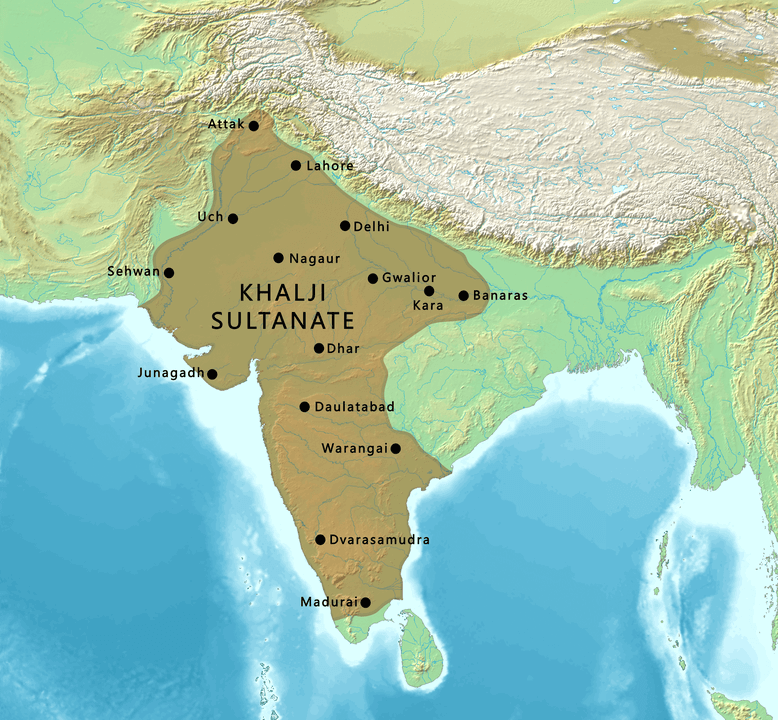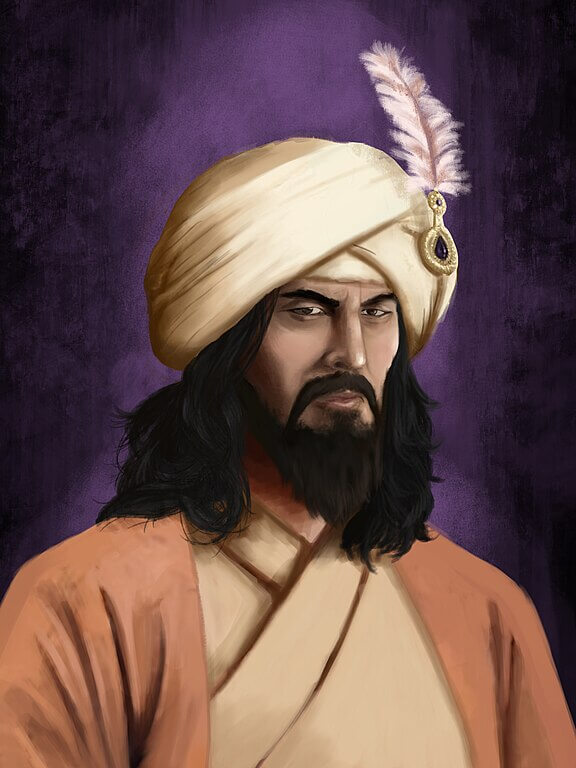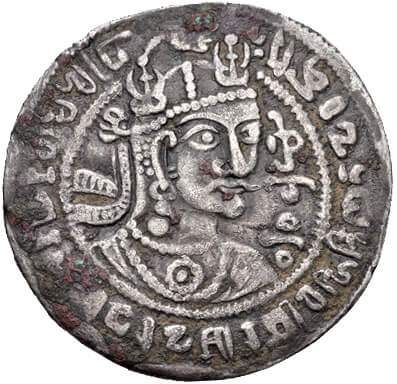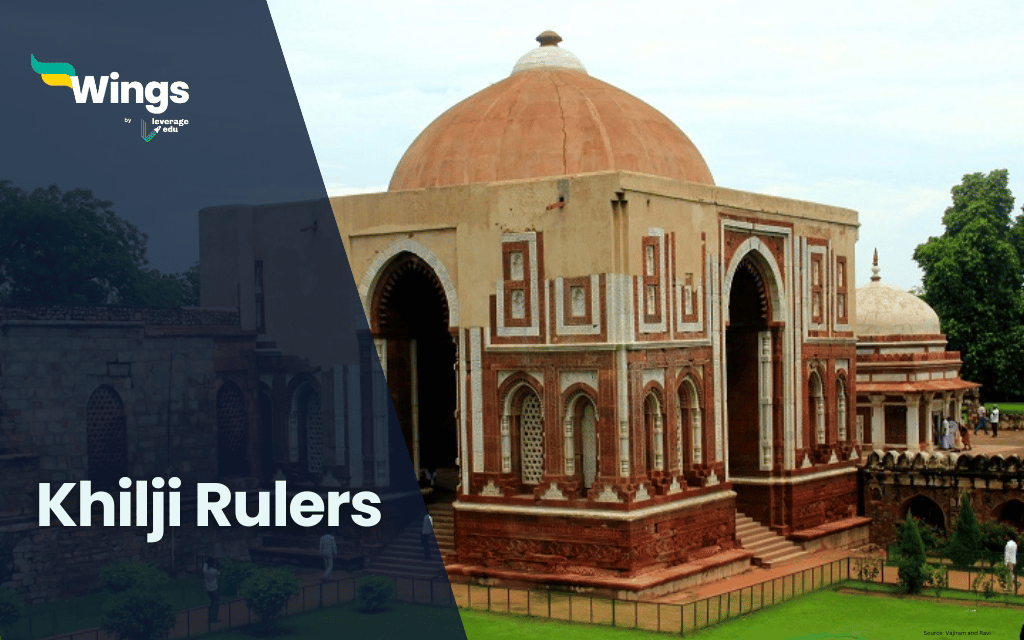The Khilji Dynasty ruled a major part of northern India for 30 years, from 1290 to 1320 CE. During this time, they made important changes in the way the Delhi Sultanate worked, especially in areas like the economy, military, and administration. Even though the dynasty was short-lived, its rulers made a big impact on Indian history.
This blog explains the list of all the Khilji rulers (1290–1320) along with their main achievements, battles, and historical importance. Whether you’re studying for exams or just curious about Indian history, this guide will help you understand the Khilji dynasty better.
Contents
Background of the Khilji Dynasty
Before the Khiljis came to power, the Mamluk (Slave) Dynasty ruled Delhi. But in 1290, Jalaluddin Khilji defeated the last Mamluk ruler and started the Khilji rule. The Khiljis were of Turkic origin but had lived in Afghanistan for a long time before moving to India. They were strong warriors and clever rulers. The Khilji dynasty is remembered for:
- Expanding the empire into South India,
- Resisting Mongol attacks,
- And making important reforms in government and the economy.
Khilji Rulers

Not all Khilji rulers were popular with the people even though there were only four rulers in the dynasty.
| Ruler | Reign |
| Jalalud-din Firoz Shah Khilji | 1290–1296 |
| Alaud-din Khilji | 1296-1316 |
| Shihab-ud-din Khilji | 1316 |
| Qutb-ud-din | 1316-1320 |
Also Read: Gupta Empire: Rise, Rulers, UPSC Notes
Jalalud-din Firoz Shah Khilji
Jalalud din Firoz Shah Khilji was the first of the Khilji rulers. He murdered the last Mamluk ruler to attain the throne. Here are some important facts about his life.
- The Delhi Sultanate expanded to the south during his reign.
- He stopped a lot of Mongol invasions of India.
- Jalalud-din was also known as a benevolent and ‘Saint Ruler’.
- Alaud-din Khilji was his nephew as well as his son-in-law.
- He appointed Alaud-din the governor of Kara after defeating Malik Chhajju with his help.
- Later, he was betrayed and killed by Alaud-din Khilji.

Alaud din Khilji
In 1296 AD Alaud-din Khilji assumed the throne after killing his uncle. His reign saw a large expansion of the kingdom and developments. Here are some important facts about Alaud-din-Khilji.
- He defeated the Mongols around 12 times in his life.
- After defeating Gujarat, he also appointed Nusrat Khan and Ulugh Khan as his generals.
- His attempted siege at Ranthambore Fort was unsuccessful.
- After a long siege, in 1301 the ruler of Ranthambore was killed.
- Alaud-din also captured Dhar, Marwar, Ujjain, Chanderi, Jalor, Chittor, Mandu and Malwa.
- Then the sultan also started invading the south through his general General Malik Kafur.
- The Southern kingdoms soon accepted his supremacy and paid him tributes for safety.

Administration During the Reign of Alaud-din Khilji
Alaud-din Khilji introduced many changes in the administration and policies at that time. These changes are majorly divided into market reforms, domestic changes and the architecture of the era.
Market Reforms
- The official market known as Shahana-i-Mandi was overseen by Diwan-i-Riyasat or the special market officials.
- All merchants willing to sell their goods at the official mandi were required to register themselves.
- They were only allowed to sell the goods at set prices.
- The Alai Darwaza or the Palace of a Thousand Pillars was also built in front of the Fort of Siri.

Domestic Policies
- The king was believed to have the divine right.
- Revenue was only collected in cash.
- Black trade was banned.
- He also set rates for particular commodities in the market.
- Under his reign, alcohol, wine and social parties were banned.
- Alaud-din also re-established the spy system.
- He also introduced branding the horses and recruited individuals to fight crime.
- A permanent standing military was always at his disposal.
- The agriculture tax was increased by 50% and was to be paid in cash or with produce.
- He also charged non-muslims with taxes such as Jizya (poll tax), Chari (field duty), Kari (house tax), and Kharaj (land tax).
Also Read: Maratha Empire (1674-1818): History, Wars, Important Leaders
Architecture
- Many beautiful structures such as Alai Darwaja, Alai Minar, Gateway to Qutub Minar, and Hauz Khas Lake were built by him.
- He also built some marvelous structures such as the Qutabi mosque in Rameswaram.
- Also, the entire city of Siri was built by Alaud-din Khilji.
- The Jamiat Khana Mosque at Nizam-ud-din Auliya is also an attribute to him.
Shihab-ud-din Khilji
Shihab-ud-din Umar Khilji was the shortest-lived ruler of the Khilji Dynasty. Here are important points about him.
- He was the son of Alaud-din Khilji.
- His father died when he was only 06 years old.
- The minister of the Khilji Dynasty Malik Kafur crowned the 06 year old boy to the throne with the conviction to protect him until he was ready.
- Malik Kafur and Shihab-ud-din Umar Khilji were soon killed by the other nobles in the court.
Also Read: Life & Accomplishments of Aurangzeb: The Least Favorite Mughal
Qutb-ud-din
His full name was Qutb-ud-din Mubarak Shah Khilji. He assumed the throne after the death of Malik Kafur and Shihab-ud-din Umar Khilji. Here are some points about him.
- He was the elder son of Alaud-din Khilji.
- When he became Sultan, he named Ghazi Malik the army commander of Punjab.
- Qutb-ud-din Mubarak Shah pulled back the market policies of his father Alaud-din causing inflation in the market.
- He was murdered in 1320, marking the end of the Khilji Dynasty.

Also Read: Pala Dynasty: Rise, Rulers, Administration & Decline
End of the Khilji Dynasty
Khilji Dynasty ended after the last ruler Qutb-ud-din was killed by Khusrau Khan in 1320 AD. The rulers after Alaud-din Khilji were weak successors. After killing the Khilji King, Khusrau Khan took the throne.
After this, the Governor of Punjab Ghazi Malik gathered a few nobles and plotted to take over Delhi. Khusrau Khan was defeated in the Battle of Lahrawat and the Battle of Saraswati. Therefore, his short-lived rule came to an end.
After capturing the throne, Ghazi Malik assumed the title Ghiyas-ud-din Tughluq and began the Tughlaq Dynasty. The rule of later Khilji kings became weak as the elder son of Alaud-din pulled out the market reforms introduced by Alud-din. This resulted in Market inflation and weakening if their power.
FAQs
Jalaluddin Khilji was the founder of the Khilji dynasty. He came to power in 1290 after defeating the last ruler of the Mamluk dynasty and ruled until 1296.
Alauddin Khilji is known for his strong military, economic reforms, and successful expansion of the empire. He defeated Mongol invasions, conquered parts of South India, and introduced strict market control and administrative systems.
There were three main rulers in the Khilji dynasty between 1290 and 1320: Jalaluddin Khilji, Alauddin Khilji, and Qutbuddin Mubarak Shah.
Relevant Blogs
| Yadava Dynasty | Satavahana Dynasty |
| The Vijaynagar Empire (1336-1647) AD | Pallava Dynasty |
| Khilji Dynasty (1290–1320) | Lodi Dynasty |
| Sunga Dynasty | Chola Dynasty |
| Kushan Dynasty | Chalukya Dynasty |
This was all about the rise, rule, administration and decline of the Khilji Dynasty. If you are interested in such content then you can find more informative blogs on Indian History by staying tuned to our General Knowledge section.
 One app for all your study abroad needs
One app for all your study abroad needs














